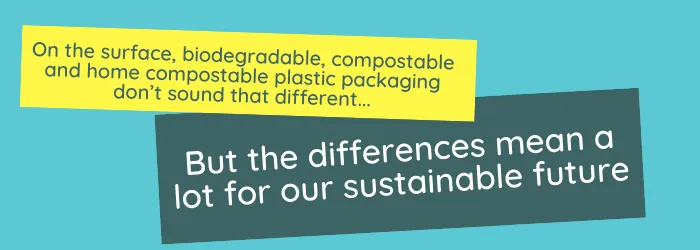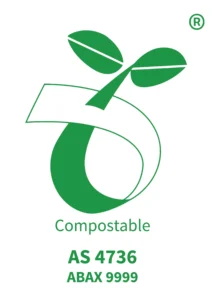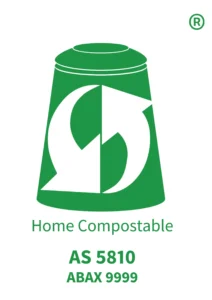Compostable and biodegradable plastics – what’s it all mean?

The Australian Government has set targets to make all packaging recyclable, reusable or compostable by 2025, which means more and more retailers are using packaging marked “compostable”, “home compostable” or “biodegradable” – but are you wondering what the deal is? The terms aren’t interchangeable, and it is important to understand what they mean, if you want to be able to make an informed choice and avoid greenwashing.
Businesses that make claims such as biodegradable, degradable or recyclable on their plastic bags and packaging must ensure those claims can be substantiated and are appropriately qualified. It’s important to recognise too that even biodegradable and compostable plastics can pose environmental risks if they become litter. or end up in landfill.
Degradable
Most substances will degrade or deteriorate given sufficient time and exposure to the right conditions, and according to the ACCC, it is considered misleading to claim that a product is ‘degradable’ without qualifying how the process occurs.
Biodegradable Plastic
The ACCC also warns that the “biodegradable” may convey a range of meanings to consumers and should not be used indiscriminately, and that extra care should be taken to avoid misleading consumers and breaching the Trade Practices Act.
So unfortunately, no single understanding of, or definition for ‘biodegradable’ exists – biodegradable products could be any material which breaks down and degrades in the environment over time (but is it 50 years? 150 years? who knows!).
This means biodegradable plastic products could be made from plant-based materials (like plants, corn oil, or starch) or petroleum-based plastics. And products labelled as biodegradable plastics are sometimes actually oxo-degradable plastics, which are conventional plastics mixed with an additive that when exposed to light or heat breaks down. Which seems good, but it actually just fragments into microplastics, which are of course toxic to the environment. Oxo degradable plastic packaging isn’t a solution to plastics pollution, and does not fit in a circular economy as it is neither recyclable or compostable.
Bioplastic, or bio-based plastic
Confusingly, again the term “bioplastics” can be used to encompass a whole family of materials which are biobased, biodegradable, or both. The Australian Government has committed to phasing out “plastic packaging products with additive fragmentable technology that do not meet relevant compostable standards” by July 2022. In Australia, the Australasian Bioplastics Association (ABA) administers a voluntary verification scheme, which is known as the ‘seedling logo’ certification system for companies or individuals wishing to have their claims of compliance verified as:
Compostable Plastic
Compostable products do not have any toxic element to the environment after degradation. So, while all compostable material is biodegradable, not all biodegradable material is compostable.
In Australia, compostable products must be certified as either “Compostable” or “Home Compostable” to meet Australian standards:
• AS4736‐2006: for “compostable” products that will break down in industrial composting, where high temperatures of 55+ degrees celsius are reached. So if plastic is labelled certified “compostable”, it will need to go to a commercial composting or a commercial organics recycling facility. These can be hard to find, but if your council offers a Food Organics and Garden Organics (FOGO) kerbside collection, it can accept compostable packaging, since FOGO is sent to a commercial composting facility. So beware…packaging labelled “compostable” can’t be composted in your own compost bin at home!

AS 5810-2010: for products that will break down in home composting. “Home compostable” plastic can be added to your home compost bin together with your food scraps and garden waste. It breaks down into its organic components at much lower temperatures than compostable plastic, and the process takes months rather than years.

Plastics certified as home compostable will break down very slowly if left in the environment, rather than in the compost bin. But they still do need reasonably high microorganism loads and consistent moisture levels, so if placed in landfill, where there is very little oxygen, they are likely to behave like conventional plastic, taking years to decades to degrade while producing methane, which is a powerful greenhouse gas. And of course, it then becomes a waste of resources.
